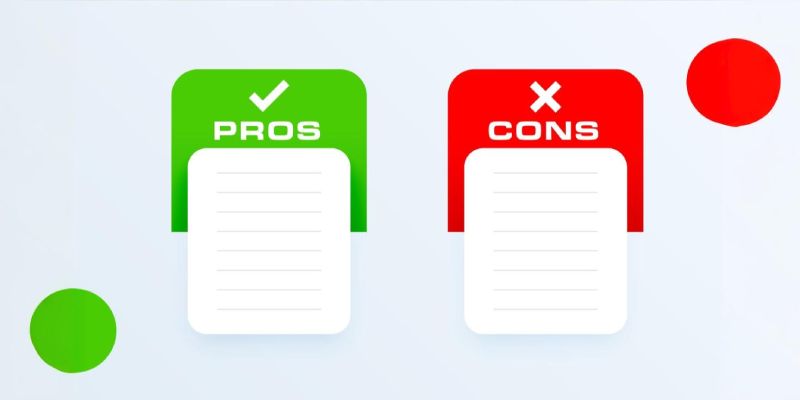
Whether you are a small business owner finding new ways to manage your business and grow or large corporations trying to expand effectively without stressing your internal systems to malfunction, outsourcing is a valid solution to varied problems. We understand how challenging it can be to own a business as a myriad of things continue to vye for your attention (sadly, both at work and at home).
This is the reason why so many businesses are looking for virtual assistants who can lighten their load and bring expertise that is hard to find and afford locally. Imagine what it was like when you first imagined what ‘being a business owner’ would feel like, do you think now you are disillusioned? Fortunately, you are not.
More and more C-suite executives and business owners are realizing the benefits of having dedicated VAs. It frees up their attention and time so that they can concentrate on their specialty and create a more meaningful impact on business and the world. So, let’s go through this extensive guide to finding a virtual assistant so that you can get on with your journey smarter.
What is a dedicated virtual assistant (VA)?
A virtual assistant can be any professional who provides support to you from a remote location and is outside of your business. They can be employees of a large VA service providing organization, freelancers, or professionals whom you can hire via a contractual agency.

By dedicated VA we mean a virtual assistant who will take over your task/s and you would not have to worry about the quality of work or missing deadlines. You can enjoy this level of freedom mostly with managed virtual service agencies, as they not only provide you the VA but also have a team that manages the VA, takes care of quality control, and much more.
Businesses, according to their requirements, use all kinds of virtual assistants. If you are wondering how to choose what type of VA you should hire, scroll down further.
How to know that you need a virtual assistant?
Before you know how to find and hire a remote assistant you should be sure of the fact that you need one (or a team for that matter). Here are some tell-tale signs that you need to delegate some of your tasks:
1. Lack of talent
For distinct roles in your company you are surely struggling to find qualified personnel as a large number of industries continue to face talent shortage especially in the U.S. The option for looking outside your city, state, and country is what can save you from this scarcity.
Choosing virtual employees over hiring in-house will give you access to a much larger talent pool (all English speaking professionals of the world) at a fraction of cost. For example, if you hire Indian talent you would not only reduce operating costs by 78% but you also avoid U.S. minimum wage law.
2. Lack of resources
Hiring in-house assistants is expensive because it involves the costs of employee insurance, payroll tax, and other benefits. You also need to consider the office space, tools, and technologies for the new employees. All these expenses add up and become a hefty sum.

A personal virtual assistant on the other hand can perform the same tasks with equal speed and precision (sometimes better) costing a lot less. Therefore, if you are short on resources or have somewhere more important you want to invest them you must consider outsourcing your tasks to a virtual assistant.
3. Misplaced attention
Administrative and repetitive tasks consume mental bandwidth and time. You could have better spent that on innovation, decision-making, and long-term vision. These tasks that include responding to routine emails, scheduling meetings, and handling paperwork, can divert executives and CEOs from high-value strategic thinking.
Additionally, task-switching can reduce productivity and creative problem-solving abilities at a significant degree. Outsourcing or automating such responsibilities allows one to concentrate on fostering company culture, leadership, and driving meaningful change. Ultimately, this ensures that their expertise and vision stay aligned with the business goals.
4. Missed opportunities
Business leaders could use the time they lose staying involved with admin tasks, to explore new opportunities. But when leaders are tackling way too many operational details, they have less capacity to strategize, network, and identify growth avenues. It is a type of distraction that can result in missed partnerships, overlooked market trends, and delayed innovations.

It is common knowledge that focusing on low-impact tasks reduces agility. This actually prevents businesses from quickly adapting to emerging opportunities. Therefore, to free up time and focus on innovation, drive expansion, build relationships, or ensure sustained business growth, businesses should embrace outsourcing.
5. More stress
A constantly growing to-do list and an endless workload can make business leaders feel overwhelmed. This feeling ultimately leads to stress and burnout. It on one hand affects mental health and physical well-being, and on the other reduces efficiency and decision-making capacity.
Taking big responsibilities is essential, but should it come at the cost of quality of life? Delegating repetitive tasks to a virtual assistant can ease the burden. It will allow leaders to focus on high-impact decisions and business growth.
How to hire a virtual assistant?
If reading the entire detailed guide on how to hire a virtual assistant seems like a drag, stick with this brief one. However, we recommend you check that one out too before you actually start looking for a dedicated virtual assistant and get to hiring.
Now, let’s get started.
Step 1: Define your goals
Before you start searching for a virtual assistant (VA), it is necessary to know the reasons behind it. Hiring someone without a clear end goal or purpose can lead to wasted resources. Therefore, ask yourself these questions:

- What aspects of your business need more focus?
- What tasks are taking too much of your time?
- Do you need specialized skills, or are general administrative tasks the priority?
Clearly picturing your goals will help you determine the kind of VA you need. Whether it’s for administrative support, social media management, customer service, or specialized work like bookkeeping or UI / UX design.
Step 2: Figure out the scope of work
After clearly defining your goals, you should outline the tasks you want your VA to handle. This helps in setting expectations and helps you find someone with the suitable skills.
Some common VA responsibilities include:
- Email management
- HR management
- Project management
- Calendar management
- CRM management
- Workflow management
- Vendor management
- Team coordinatio
First, you should create a list of recurring and one-time tasks. The goals and the tasks in front of you will help decide what outsourcing business model to choose and set clear expectations when hiring.
Step 3: Learn about the VA business models
Virtual assistants operate under different business models. Understanding these will help you find the best fit for your needs and budget.

The three main models are:
1. Virtual Assistant Contract Agencies
A virtual assistant contract agency is actually a middleman who will connect you with a pool of independent virtual assistants or they may choose one themselves assessing your needs.
2. Managed VA Services
A managed virtual agency hires employees, provides regular training, and oversees a team of VAs. They handle all facets of the VA’s work including communication, quality control, and so on.
3. Freelance Virtual Assistants
A freelance VA is a self-employed individual who can work with you on a contract basis. They will work from their own home office and communicate through online platforms.
Once you understand these models, it will allow you to make an informed decision about whom to choose for the best incorporation of a VA into your business.
Step 4: Choose among the ‘three’ and hire
After getting to know the VA models, it’s time to choose and hire. Consider their pros and cons and costs attached to make a decision.

Let us help:
1. Managed VA Services
Pros: No need to oversee the VA, built-in security, scalability, and support teams.
Cons: Higher costs ($3.74–$25/hr) and limited specialized skills.
2. Freelance VAs
Pros: Cost-effective ($10–$20/hr), flexible, and access to global talent.
Cons: Lack of security, inconsistent commitment, and requires direct management.
3. Contract Agency VAs
Pros: More control and flexibility.
Cons: Higher rates ($20–$100/hr), time-consuming hiring, and no quality oversight.
Step 5: Clearly define job expectations
Once you have selected your VA, the next step is setting clear expectations. You will work with people belonging from a very diverse background and who are working remotely, so any miscommunication can lead to major inefficiencies.
Therefore, be upfront about:
- Work hours and availability (especially if they are in a different time zone)
- Communication tools (Slack, Zoom, Email, etc.)
- Task deadlines and deliverables
- Payment terms (hourly, project-based, or salary)
- Performance benchmarks and KPIs
Setting clear expectations from the beginning ensures both parties are aligned. It will prevent misunderstandings and inefficiencies down the road.
Step 6: Emphasize clear communication
Effective communication is the backbone of a successful working relationship with a virtual assistant. Without a proper communication strategy, your VA may misinterpret tasks, miss deadlines, or productivity can decline.

Here’s how to ensure clear communication:
Use the right tools
Utilize project management tools like Asana, Trello, or ClickUp for task tracking. And for daily communication you can use Slack, Zoom, and email.
Set regular check-ins
Schedule weekly or bi-weekly meetings to review progress and address any concerns.
Be specific
When assigning tasks, provide detailed instructions. Going overboard on that is not a bad idea when working with a remote person.
Encourage questions
Create an open environment where your VA feels comfortable seeking clarification.
Consistent and clear communication is key to efficiency and a smoother collaboration.
Step 7: Request and provide regular feedback
Feedback is essential for improvement and growth. A strong feedback loop allows both you and your VA to improve the working relationship.
Here’s how you can start:
Set up performance reviews
Conduct routine reviews to discuss what is working well and what needs improvement.
Encourage your VA to provide feedback
They may have valuable insights on improving workflows and productivity.
Acknowledge good work
Positive reinforcement is always a plus and it boosts motivation and loyalty.
Offer constructive feedback
Be clear about areas that need improvement, and be sure to frame it in a way that encourages growth.
Regular feedback ensures that your VA stays aligned with your business goals and continuously improves their performance.
Final thoughts
Now that you have a clear idea about the situations that demand outside assistance and what models you can choose to find your virtual assistant.
But, it is up to you to decide what path you will choose to get a dedicated virtual assistant. While managed virtual assistant service may be the best bet, you should rely on your own interactions with the providers to make the final decision.
If you are still having some doubts, you should contact us. DedicatedVA is a virtual assistant service provider offering you qualified individuals with domain expertise for any task you need to outsource. You can schedule a free meeting right now and clear all your doubts.







